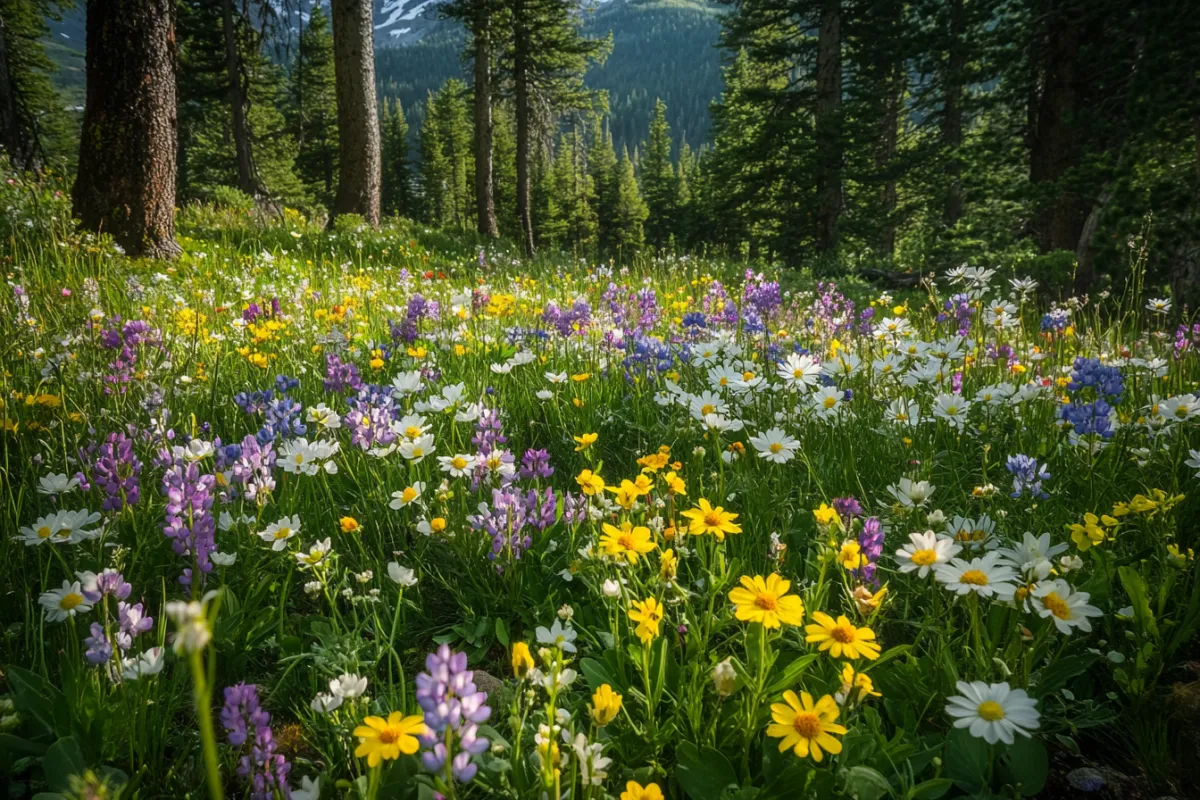
Bloom, Breathe, and Connect: 5 Ways Forest Flowers Enhance Your Forest Bathing Experience
Bloom, Breathe, and Connect: 5 Ways Forest Flowers Enhance Your Forest Bathing Experience
When we think of forest therapy or Shinrin-yoku (forest bathing), we often picture towering trees, cool shade, and serene trails. Yet tucked away within this green canopy lies a quieter, vibrant presence—forest flowers. These delicate blooms offer more than their beauty; they engage the senses, deepen mindfulness, and inspire creativity, making your forest bathing experience even more profound.
Here are five ways forest flowers can enhance your time in nature, helping you heal, connect, and see the world with fresh eyes.
1. The Mood-Boosting Effects of Flower Colors and Fragrances
Flowers are nature’s palette, splashing vibrant hues across the forest floor. Their colors—soft whites, cheerful yellows, calming blues, and vivid purples—have a direct impact on our mood and emotions:
Warm Colors like yellows and oranges uplift the spirit, promoting feelings of joy and energy.
Cool Colors like blues, greens, and purples have a calming effect, reducing stress and encouraging relaxation.
Fragrances from flowers like lavender, honeysuckle, or wild roses provide natural aromatherapy, easing anxiety and clearing mental fog.
Scientific studies have shown that exposure to flowers reduces cortisol levels, boosts serotonin production, and elevates mood. Their sensory appeal connects us to the present moment, helping us feel more alive and grounded.
Forest Therapy Tip: Pause near a patch of blooming flowers and observe their colors and scents. Breathe deeply, allowing their fragrance to calm your mind and their colors to lift your spirits.
2. How Observing Flowers Can Deepen Your Mindfulness Practice
Forest flowers invite us to slow down and pay attention. Observing their intricate details—the shape of petals, the symmetry of blossoms, or the dew resting on their surfaces—draws us into the present moment.
Practicing flower observation enhances mindfulness by engaging all of your senses:
Sight: Notice colors, patterns, and how flowers catch the light.
Touch: Feel the texture of leaves or petals (gently, without harming them).
Smell: Inhale deeply and explore the subtle scents of different blooms.
Hearing: Listen to the buzz of bees or the rustle of leaves nearby.
Forest Therapy Tip: Find a quiet spot near a cluster of flowers. Choose one bloom and focus your full attention on it. Notice its tiny details, and let your mind settle into stillness. Use this moment to reflect on the beauty of simplicity.
3. The Fascinating World of Flower-Pollinator Relationships
Flowers don’t bloom alone; they rely on pollinators like bees, butterflies, hummingbirds, and even the wind to thrive. Watching these relationships unfold in the forest is not only fascinating but also a gentle reminder of the interconnectedness of all life.
Bees and butterflies seek nectar, transferring pollen as they move from flower to flower.
Birds (like hummingbirds) help pollinate brightly colored, tubular flowers.
The Wind carries pollen between blossoms, sustaining plants and ecosystems.
Observing these relationships reminds us of the silent cooperation within nature—each participant playing its role to sustain life. This awareness can inspire gratitude and a sense of wonder.
Forest Therapy Tip: Sit near a flowering bush or meadow and observe pollinators in action. Notice their movements and the delicate exchanges between flowers and insects. Reflect on the interconnected relationships in your own life.
4. Traditional and Modern Uses of Edible and Medicinal Forest Flowers
For centuries, forest flowers have played a role in traditional medicine, cooking, and cultural rituals. Even today, their edible and medicinal properties connect us to nature’s healing power:
Edible Flowers: Blossoms like violets, dandelions, and nasturtiums can be used in teas, salads, or as natural garnishes, providing vitamins and antioxidants.
Medicinal Flowers: Flowers like elderflowers are known for their immune-boosting properties, while yarrow has been used for wound healing and inflammation.
Symbolism and Rituals: In many cultures, flowers hold symbolic meaning, representing renewal, love, or healing.
Forest Therapy Tip: Learn to identify safe, edible forest flowers or those with medicinal properties (always research and consult guides before foraging). Reflect on how nature provides sustenance and healing.
5. How Flower Appreciation Can Inspire Creativity and Artistic Expression
The beauty of flowers has inspired artists, poets, and thinkers for centuries. Their vibrant colors, delicate forms, and ephemeral nature spark creativity and encourage us to express ourselves.
Whether you’re writing a poem, sketching a bloom, or simply taking photos, flowers invite you to engage with your creative side. They remind us that art can be found in the simplest, most fleeting moments of life.
Creative Ideas:
Bring a notebook and sketch or describe flowers you encounter.
Write a short poem inspired by a particular bloom.
Capture photographs of forest flowers, focusing on details like shadows, water droplets, or pollinators.
Forest Therapy Tip: Choose one flower as your muse. Sit quietly and observe its beauty, then create something inspired by it—whether it’s a drawing, journal entry, or photograph. Let your creativity flow without judgment.
Practical Tips for Flower-Focused Forest Bathing
Slow Down: Flowers are easy to miss when moving too quickly. Walk slowly and let yourself notice small, colorful details.
Practice Respect: Avoid picking wildflowers. Instead, enjoy them where they grow and leave them for others—and pollinators—to appreciate.
Use All Your Senses: Engage with flowers by sight, smell, and touch (gently). Avoid disturbing their natural habitats.
Document Your Discoveries: Bring a nature journal to sketch or write about your observations.
Learn Flower Names: Use a plant identification app or guidebook to learn about the flowers you encounter, deepening your connection to the forest.
Let Forest Flowers Inspire and Heal You
Forest flowers are small wonders that add layers of beauty, mindfulness, and meaning to your forest bathing experience. They remind us to slow down, observe, and appreciate the simple moments that nature offers. From their vibrant colors to their role in supporting pollinators, flowers inspire creativity, reduce stress, and teach us about life’s fleeting beauty.
The next time you step into the forest, take a moment to notice the flowers at your feet. Let their presence lift your mood, calm your mind, and reconnect you to the natural world.
Ready for more tips and inspiration on forest therapy and nature connection? Subscribe to our blog and join a community of nature lovers exploring mindfulness, healing, and creativity in the great outdoors.
Subscribe today and let the beauty of the forest inspire you to bloom! 🌸🌿


